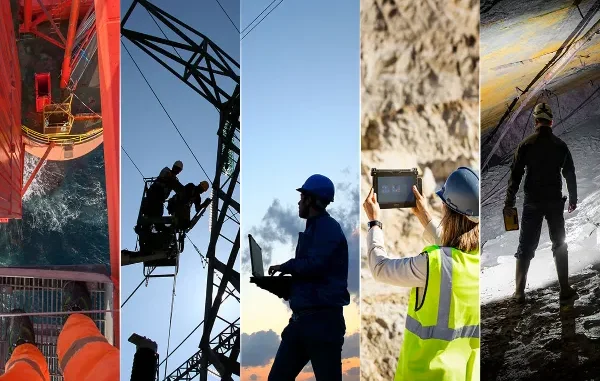
Personal Protective Equipment (PPE) remains a critical line of defence for workers operating in high-risk environments. From construction sites and manufacturing plants to chemical facilities and logistics hubs, the consistent use of PPE—such as helmets, high-visibility clothing, gloves, and eye protection—is essential for reducing injuries and saving lives. Yet despite its importance, ensuring consistent PPE compliance continues to be a major challenge for safety teams across industries.
Whether due to human error, time pressures, comfort issues, or simple forgetfulness, lapses in PPE usage happen frequently. These violations may seem minor in the moment but can have serious consequences if an incident occurs. Traditional enforcement methods—such as manual supervision or periodic audits—struggle to keep pace with the complexity and speed of modern operations. That’s where technology is stepping in to transform how organisations manage PPE compliance at scale.
The Cost of Non-Compliance
Non-compliance with PPE requirements doesn’t just endanger individuals—it carries significant operational and financial risks. Workplace injuries often result in lost workdays, medical expenses, and potential legal action. In regulated industries, failure to enforce PPE standards can lead to fines or shutdowns. Reputational damage can also occur, especially in cases that attract media attention or regulatory scrutiny.
Furthermore, when PPE rules are not consistently followed, it can undermine the safety culture of an entire organisation. Employees may perceive that safety isn’t a priority, leading to wider behavioural lapses and increased incident rates. For safety leaders, the challenge lies in maintaining vigilance across large teams, multiple shifts, and complex environments—something that human oversight alone can’t always achieve.
Limitations of Traditional Monitoring
Historically, PPE compliance has been monitored through a mix of supervisor spot-checks, CCTV reviews, and self-reporting. While these methods offer some value, they are often reactive and incomplete. Supervisors can’t be everywhere at once, and video footage is time-consuming to analyse manually. Additionally, relying on workers to report their own violations introduces bias and gaps in the data.
These limitations have created a clear need for scalable, real-time solutions that can ensure compliance without slowing down operations. This is especially important in sectors where speed and safety must go hand-in-hand.
Technology Enters the Scene
New advances in computer vision and machine learning have made it possible to monitor PPE usage automatically, accurately, and in real time. Smart cameras and edge computing devices can now be trained to recognise whether workers are wearing required gear as they enter a zone or operate specific machinery. If a helmet or high-vis vest is missing, alerts can be sent immediately to both the worker and site supervisor.
These systems offer several advantages over traditional approaches. They are consistent, objective, and capable of continuous monitoring across large areas. Because they don’t rely on human intervention, they also reduce the risk of oversight and bias.
Customisation and Context-Awareness
Modern PPE monitoring technologies can be tailored to specific job roles, areas, and safety protocols. For instance, certain zones may require respiratory protection, while others may not. AI models can be trained to recognise these differences, ensuring that alerts are only triggered when there is a genuine breach of protocol. This reduces false positives and helps maintain trust in the system.
Some systems also integrate with access control, denying entry to areas if PPE requirements are not met. Others tie into workforce management platforms, logging compliance data that can be reviewed during audits or used to inform training.
The Benefits of Proactive PPE Enforcement
By catching PPE violations before they result in injury, proactive monitoring systems significantly reduce risk. They also help shift the workplace mindset from reactive problem-solving to continuous prevention. Workers become more aware of their responsibilities and more consistent in their behaviour.
For safety managers, these technologies provide valuable data. Compliance rates can be tracked over time, hotspots identified, and specific teams or locations flagged for additional support. This leads to smarter resource allocation and a stronger overall safety culture.
Scaling Safety with a PPE AI Detection System
Companies aiming to embed real-time monitoring into their safety practices are increasingly turning to solutions like a PPE AI detection system. These tools use advanced algorithms to scan environments and detect non-compliance instantly, without requiring additional staff or intrusive oversight. The result is a safer workplace with fewer interruptions and more actionable insights.
By implementing AI-driven monitoring, organisations benefit from improved accountability, reduced injury rates, and faster response times when violations occur. Over time, this contributes not only to operational continuity but also to stronger morale and employee trust.
The Future of PPE Compliance
As digital transformation continues across industrial sectors, PPE monitoring is becoming an essential part of larger safety ecosystems. Integration with IoT sensors, wearables, and predictive analytics platforms allows for even more refined risk management. For example, systems may detect if a worker has removed gloves repeatedly during a shift or combine PPE data with heat stress indicators to guide interventions.
This shift from static checklists to dynamic, data-driven oversight marks a significant evolution in workplace safety. It empowers organisations to protect their teams more effectively while aligning with operational goals and regulatory demands.
In high-risk industries, PPE isn’t just a guideline—it’s a lifeline. With the support of smart detection systems, businesses can ensure that lifeline is always in place, without compromise or delay.
Leave a Reply